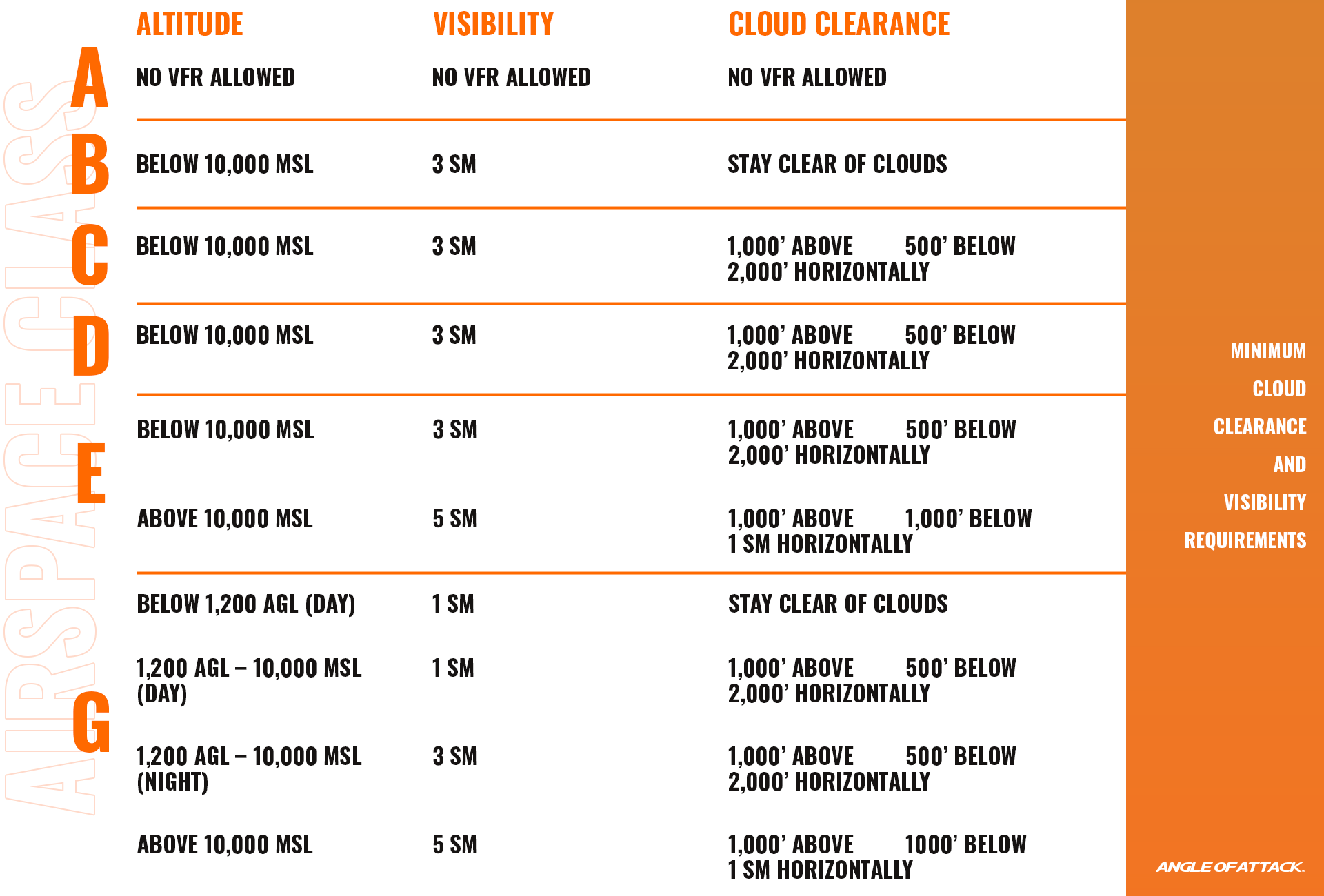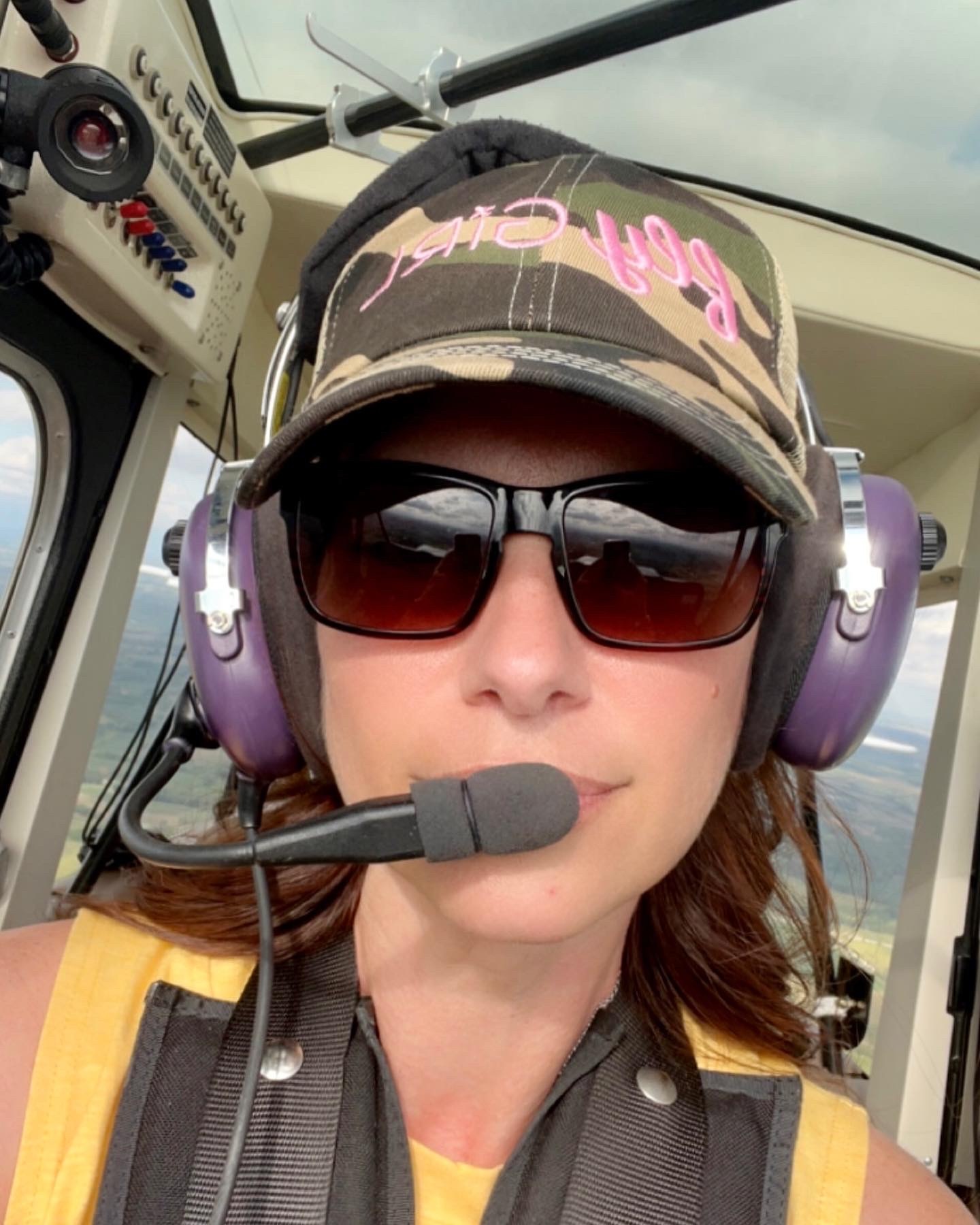
A safe flight is subject to the pilot’s proper visibility during takeoffs, landings, and in-route. If there is any issue with that, there are high chances of air traffic conflicts and collisions between aircraft. The FAA has laid out some minimum visibility and cloud clearance requirements every private pilot must meet to avoid getting into a sticky situation.
Read on as we’ll discuss those cloud clearance requirements in detail and give you a quick guide to memorizing them, especially if you’re an aspiring pilot.
What Are The Minimum Cloud Clearance And Visibility Requirements?
The VFR weather minimums comprise the minimum visibility and cloud clearance requirements for a VFR flight to operate safely. These are classified based on the Class of airspace (A, B, C, D, E, and G) and flight altitude. All VFR flights must meet these weather minimums to avoid mid-air mishaps and potential traffic conflict.
Here are the VFR minimum visibility and cloud clearance requirements for all types of airspace and altitudes.

How Do I Remember Cloud Clearance Requirements?
As mentioned, every VFR pilot must adhere to the minimum visibility and cloud clearance requirements. However, if you’re an aspiring pilot and wonder how to memorize these weather minimums, here’s a quick breakdown of these sometimes confusing numbers to help you out.
For Class A
Since there’s no VFR flight allowed or weather minimums for the Class A airspace, you just need to remember “NO VFR.“
For Class B
In Class B airspace, the weather minimums are 3 SM (visibility) and Clear of Clouds (cloud clearance.) We’ll drop SM from the former as it’s a common unit. We’re left with “Clear of Clouds” which we’ll shorten to “COC.” Thus, you just need to remember “3, COC” for Class B cloud clearances.
For Class C & D
Since Class C & D feature identical weather minimums, let’s assign a common mnemonic to both of these. One of the most popular two-seat flight training airplanes, the Cessna 152, is what will help you here. We’ll shorten the visibility of 3 SM to “3” and write cloud clearances of 1,000 feet above (A), 500 feet below (B), and 2,000 feet horizontal (H) as ABH or “152.” So, “3, 152’s” is your final mnemonic to memorize.
For Class E
Class E is the first class with more than one altitude requirement – at or above 10,000 MSL and below 10,000 MSL. It’s worth noting that most general aviation airplanes fly below the 10,000 Mean Sea Level (MSL). Hence, the mnemonic for this will be similar to that of Class C/D airspace, i.e., 3, 152’s.
When talking about the faster and more advanced airplanes that usually fly at or above 10,000 MSL, the visibility is 5 SM, and cloud clearance requirements are 1,000′ above, 1,000′ below, and 1 Statute Mile between. An easier way to remember this is “5, 111.” So, “Below 10,000ft: 3, 152’s, At or Above 10,000ft: 5, 111” is your final mnemonic to memorize.
For Class G
Class G airspace is truly the most complex airspace with a total of three altitude requirements with separate minimums for Day and Night. While figuring out the mnemonic for this particular airspace, pay attention to the altitude qualifiers – AGL and MSL. We’ll use the mnemonics used above for Classes B, C/D, and E here. Below is the final output you can remember.
- 1,200 or Below, Day: 1, COC
- 1,200 or Below, Night: 3, 152’s
- 1,200+ Below 10,000, Day: 1, 152
- 1,200+ Below 10,000, Night: 3, 152’s
- Above 10,000: 5, 111
What Are The Minimum Visibility And Cloud Clearance Requirements For Solo Flights?
The minimum visibility and cloud clearance required for solo flights are 1 Statute Mile and 1,200 feet AGL or less in the daytime. These weather minimums are outlined in § 91.155.
What Is The Minimum Visibility Under 10,000 Feet?
The minimum visibility under 10,000 feet is 3 Statute Miles.
What Is The Minimum VFR Ceiling?
A ceiling is the lowest cloud base height relative to the ground. The minimum VFR ceiling is 3,000 feet AGL (height above ground level), and visibility is more than 5 miles.
What Is Cloud Clearance?
Pilots flying aircraft under visual flight rules (VFR) must maintain a specific distance (above, below, and horizontally) from the clouds to prevent collision with another aircraft or terrain that may pop out from the clouds. This is called cloud clearance.
To manage all this, pilots must follow the general cloud clearance requirements laid down by the FAA. If you’re interested in learning more about cloud clearance requirements, head to our Private Pilot Online Ground School to get more in-depth learning on the topic.

Karey grew up and obtained her in private pilot’s license in Central Iowa. She fell in love with tailwheel aircraft during her primary training and obtained a tailwheel endorsement the week following her private pilot checkride. She is eager to obtain her seaplane rating and is merging her passion for flying with her prior work career. Karey has a background in marketing, editing, and web design after graduating from Simpson College. When she is not flying or working, Karey enjoys anything related to technology and admits she can be a bit of a nerd. She also has discovered a love for virtually all outdoor pursuits, with a special fondness for climbing, shooting, and hiking.

Stay Connected
Be the very first to get notified when we publish new flying videos, free lessons, and special offers on our courses.





